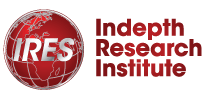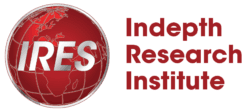Contents
- 1 Introduction
- 2 Why Grant Writing for NGOs Matters More Than Ever
- 3 Understanding Donor Priorities in 2025
- 4 Anatomy of a Winning Grant Proposal
- 5 Common Mistakes NGOs Make in Grant Writing
- 6 Best Practices in Grant Writing for NGOs (2025 Edition)
- 7 Tools & Resources for NGOs in 2025
- 8 Compliance and Ethics in Grant Writing
- 9 Case Studies: Winning NGO Grant Applications
- 10 Future Trends in NGO Grant Writing (2025 & Beyond)
- 11 FAQs on Grant Writing for NGOs
- 12 Building Capacity Through Training
- 13 Conclusion
Introduction
More than 80% of NGOs globally rely on donor funding as their primary income source, yet only 1 in 10 grant applications is successful. With competition intensifying and donors raising compliance standards, mastering grant writing for NGOs is no longer optional—it’s a matter of survival in 2025.
This guide dives deep into the best practices, donor requirements, tools, and case studies every NGO needs to know to secure funding and build long-term sustainability.
Why Grant Writing for NGOs Matters More Than Ever
Grant funding is the lifeblood of NGOs, fueling humanitarian aid, social development, and advocacy. In 2025, donors such as USAID, ECHO (EU Humanitarian Aid), UNHCR, and FCDO are prioritizing transparency, localization, climate adaptation, and gender equity. NGOs that fail to align their proposals with these priorities risk being overlooked, regardless of the worthiness of their mission.
Case in point: in 2023, several African NGOs lost access to ECHO funding after proposals failed to demonstrate safeguarding and monitoring systems. The lesson? Strong grant writing for NGOs is not just persuasive—it’s about compliance, credibility, and alignment with donor strategy.
Understanding Donor Priorities in 2025
To succeed, NGOs must show that their proposals are not just projects but solutions to donor priorities.
- USAID: Committed to the localization agenda—directing 25% of its funding to local organizations by 2025.
- ECHO (European Civil Protection and Humanitarian Aid Operations): Prioritizing climate resilience, humanitarian-development nexus, and accountability to affected populations.
- UNHCR: Emphasizing protection, displacement solutions, and data accountability.
- FCDO (UK Aid): Focus on safeguarding, gender equality, and innovative financing.
Pro Tip: Mirror donor language in your proposal. If USAID mentions “resilience and localization,” those exact terms should appear in your problem statement and theory of change.
Anatomy of a Winning Grant Proposal


Every strong grant application includes these essential elements:
- Executive Summary – A concise, compelling snapshot.
- Problem Statement – Backed by evidence and local context.
- Goals and Objectives – Clear, measurable, achievable.
- Theory of Change/Approach – How your project drives impact.
- Implementation Plan – Timeline, staffing, partnerships.
- Budget – Transparent, realistic, and aligned with donor rules.
- Monitoring, Evaluation, and Learning (MEL) – Indicators and outcomes.
- Safeguarding & Risk Management – Policies on PSEA, child protection, fraud prevention.
- Sustainability & Exit Strategy – Donors want to see long-term impact.
Common Mistakes NGOs Make in Grant Writing


Even well-intentioned NGOs lose funding because of avoidable missteps:
- Copy-paste proposals that don’t align with donor priorities.
- Overuse of jargon that confuses reviewers.
- Weak budgets that lack justification or transparency.
- No safeguarding policies 2 which lead to automatic disqualification with most donors.
- Ignoring donor templates – proposals are screened out before review.
Case Example: In East Africa, a consortium lost funding from FCDO in 2022 after failing to include a safeguarding framework, despite having strong technical expertise.
Best Practices in Grant Writing for NGOs (2025 Edition)
Here are the must-follow rules to succeed in 2025:
1. Tailor Every Proposal
Donors can spot generic copy instantly. Customize every section to fit donor requirements.
2. Use Evidence & Data
Proposals backed by local statistics, UN reports, or government data demonstrate credibility.
3. Emphasize Localization
Show how local partners and communities drive implementation. Donors want bottom-up approaches, not top-down.
4. Ensure Budget Transparency
Break down line items clearly. Avoid “miscellaneous expenses.” Include justifications.
5. Showcase Monitoring, Evaluation & Learning (MEL)
Link funding to measurable impact. Use digital MEL tools like DHIS2, KoboToolbox, or DevResults.
6. Integrate Safeguarding & Compliance
Donors require PSEA (Protection from Sexual Exploitation and Abuse), child protection, and anti-fraud policies.
7. Tell a Story, But Keep It Professional
Balance emotional narratives with hard evidence. Avoid stereotypes or “poverty porn.”
Tools & Resources for NGOs in 2025
Grant writing is no longer manual—digital tools can save time and improve quality. Here are some of them.
- ProposalCENTRAL – Grant submission platform.
- Fluxx & Foundant – Grant management systems.
- GrantStation & FundsforNGOs – Databases of funding opportunities.
- Google Workspace, Asana, Trello – Collaboration & proposal management.
Compliance and Ethics in Grant Writing
Donors reject proposals that fail ethical or compliance tests.
- Compliance: Follow donor rules (USAID ADS, ECHO guidelines, UNHCR frameworks).
- Ethics: Use respectful, empowering language about communities served.
- Safeguarding: Non-negotiable. Have staff codes of conduct, reporting channels, and partner oversight.
Case Studies: Winning NGO Grant Applications
- Kenya (WASH Project, 2023): A mid-sized NGO secured €2M from ECHO by designing a robust MEL framework with digital dashboards.
- Uganda (Women’s Empowerment, 2024): A women-led NGO won USAID funding after aligning their proposal with USAID’s localization strategy.
Also read: 10 NGO Strategies To Overcome The Humanitarian Funding Crisis
Future Trends in NGO Grant Writing (2025 & Beyond)
The funding landscape is shifting. NGOs that adapt early will thrive.
- AI-assisted proposal writing – tools like ChatGPT and Grammarly are helping NGOs polish language.
- Outcome-based financing – donors fund verified results, not just activities.
- Climate-linked funding – almost every donor now integrates climate resilience.
- Localization – more funding flows directly to local organizations.
FAQs on Grant Writing for NGOs
Q: How long should an NGO proposal be?
A: Follow donor guidelines; typically 10–30 pages.
Q: Do NGOs need consultants for proposals?
A: Helpful for technical bids, but donors prefer in-house capacity building.
Q: Which donors fund African NGOs?
A: USAID, ECHO, UNHCR, FCDO, World Bank, and private foundations (Ford, Gates).
Q: How far in advance should NGOs prepare a proposal?
A: Start at least 3–6 months before the deadline to allow proper research and review.
Q: Why do strong ideas still get rejected?
A: Often due to non-compliance, weak budgets, or missing safeguarding policies, not the idea itself.
Building Capacity Through Training


Even the best guidelines won’t help if staff lack capacity. Many NGOs lose opportunities because their teams aren’t trained in donor compliance, MEL frameworks, or budget writing. Training and upskilling in grant writing ensures consistency, quality, and compliance across proposals.
Conclusion
In 2025, mastering grant writing for NGOs is about more than persuasion—it’s about compliance, evidence, and alignment with donor agendas. NGOs that tailor proposals, leverage digital tools, and invest in staff training are best positioned to win grants and deliver lasting impact.
Explore our Grant Writing and Proposal Development for NGOs to strengthen your NGO’s funding capacity today.
Eric is a seasoned digital marketing strategist experienced in brand positioning, content strategy and results-driven campaigns. He has collaborated with leading brands and institutions across Africa to amplify their impact. At IRES, he leads strategic communication efforts and campaigns for leaders in public service and governance, humanitarian work and regional development. Email: [email protected]









Comment here